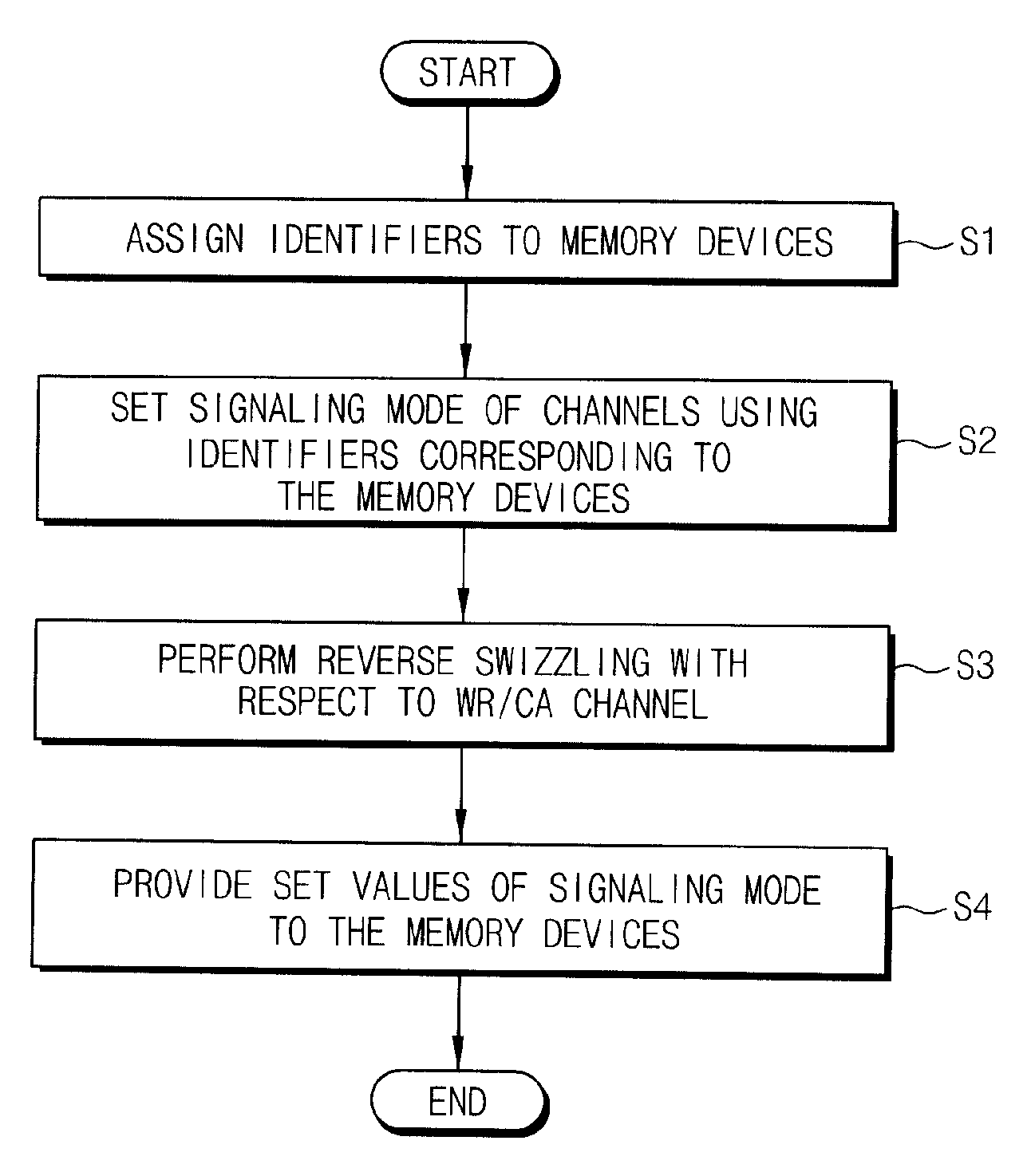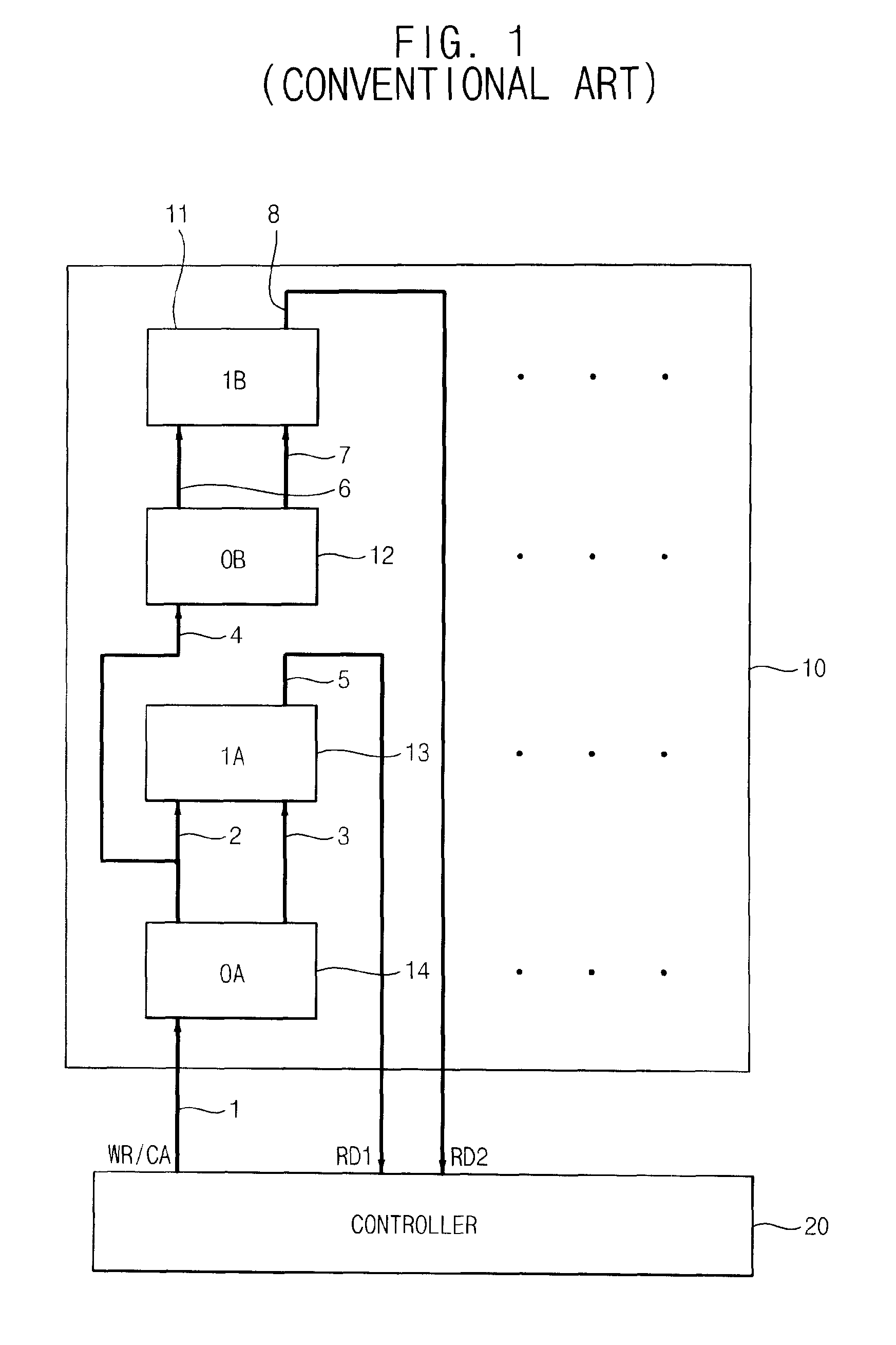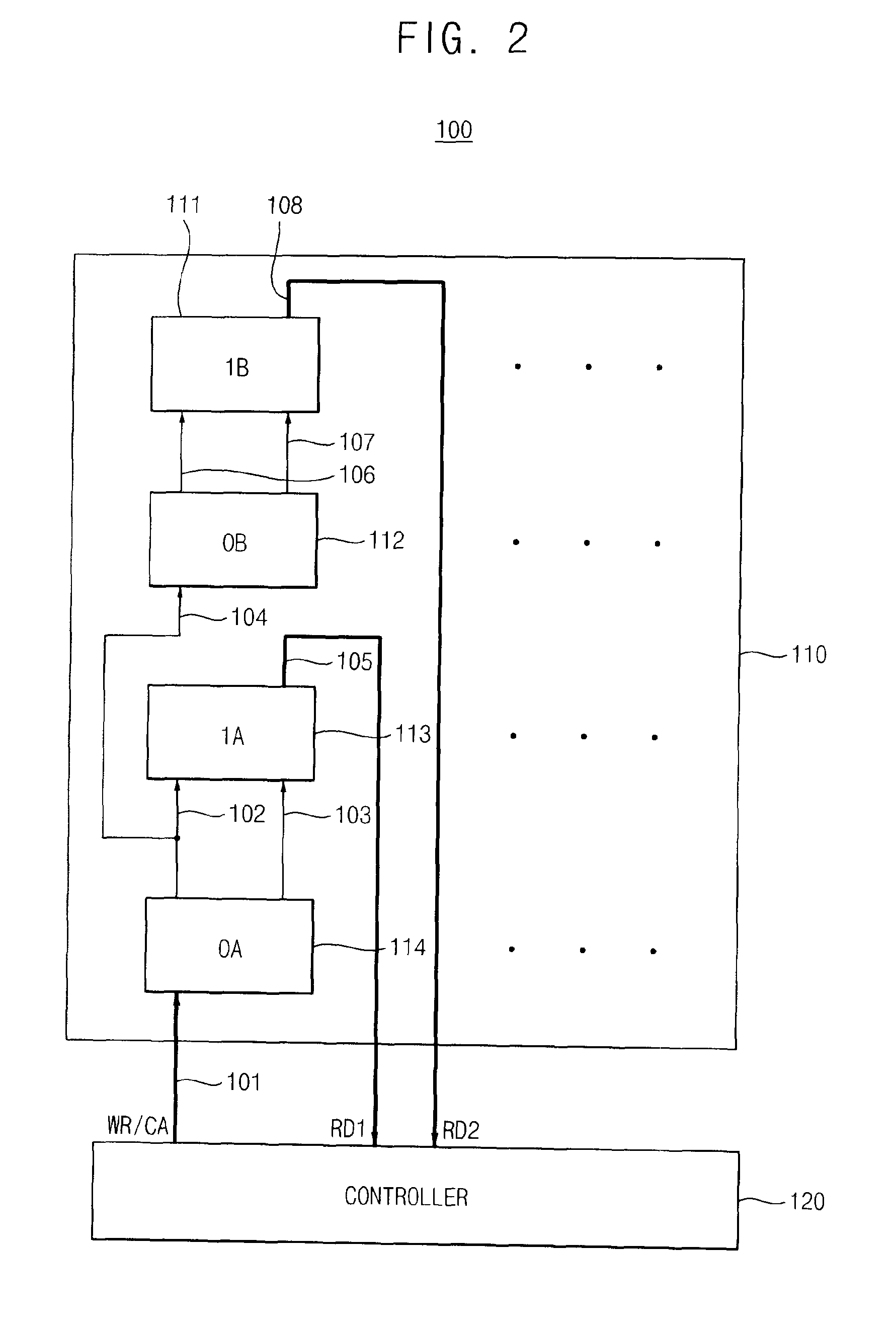Memory system having low power consumption
a memory system and power consumption technology, applied in the field of memory systems, can solve the problems of increasing the power consumption of the memory system, limited signaling in a multi-slot mode between a memory controller and a memory module in which memory devices are mounted, and limit single-ended signaling, etc., and achieve the effect of low power consumption
- Summary
- Abstract
- Description
- Claims
- Application Information
AI Technical Summary
Benefits of technology
Problems solved by technology
Method used
Image
Examples
ninth example embodiment
[0122]FIG. 12 is a block diagram illustrating a memory system according to the present invention.
[0123]Referring to FIG. 12, the memory system 800 includes a memory module 810 and a memory controller 820.
[0124]The memory module 810 includes a first semiconductor memory device (0A) 814, a second semiconductor memory device (1A) 813, a third semiconductor memory device (0B) 812 and a fourth semiconductor memory device (1B) 811. The memory controller 820 sets a signaling mode based on stack position information of each of the semiconductor memory devices 811, 812, 813 and 814. In FIG. 12, a bus drawn with a thick line represents a bus in which signaling is performed in a differential signaling mode, and a bus drawn with a thin line represents a bus in which signaling is performed in a single-ended signaling mode.
[0125]The first semiconductor memory device (0A) 814 receives a first packet WR / CA in the differential signaling mode through a first port (not shown) from the memory controlle...
tenth example embodiment
[0130]FIG. 13 is a block diagram illustrating a memory system 900 according to the present invention.
[0131]Referring to FIG. 13, the memory system 900 includes a memory module 910 and a memory controller 920.
[0132]The memory module 910 includes a first semiconductor memory device (0A) 914, a second semiconductor memory device (1A) 913, a third semiconductor memory device (0B) 912 and a fourth semiconductor memory device (1B) 911. The memory controller 920 sets a signaling mode based on stack position information of each of the semiconductor memory devices 911, 912, 913 and 914. In FIG. 13, a bus drawn with a thick line represents a bus in which signaling is performed in a differential signaling mode, and a bus drawn with a thin line represents a bus in which signaling is performed in a single-ended signaling mode.
[0133]The first semiconductor memory device (0A) 914 receives a first packet WR / CA in the differential signaling mode through a first port (not shown) from the memory contr...
PUM
 Login to View More
Login to View More Abstract
Description
Claims
Application Information
 Login to View More
Login to View More - R&D
- Intellectual Property
- Life Sciences
- Materials
- Tech Scout
- Unparalleled Data Quality
- Higher Quality Content
- 60% Fewer Hallucinations
Browse by: Latest US Patents, China's latest patents, Technical Efficacy Thesaurus, Application Domain, Technology Topic, Popular Technical Reports.
© 2025 PatSnap. All rights reserved.Legal|Privacy policy|Modern Slavery Act Transparency Statement|Sitemap|About US| Contact US: help@patsnap.com



